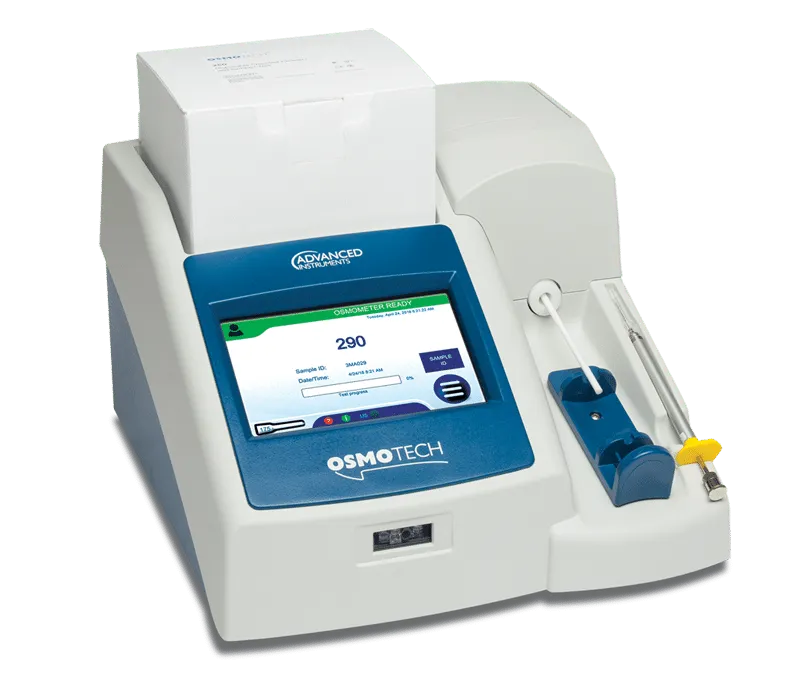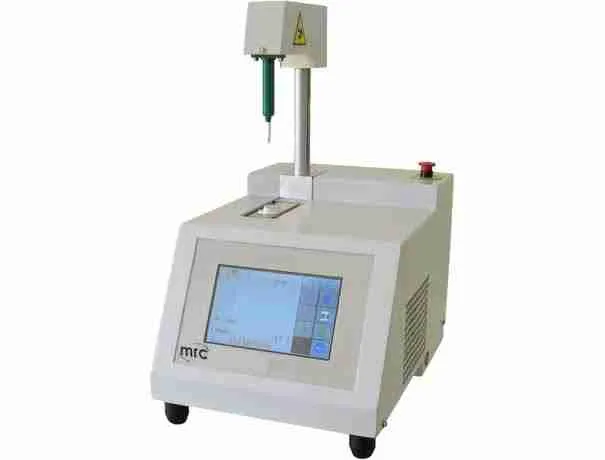Osmometers, Osmolarity and Osmolality – What are they?

Have you ever wondered how osmometers work and what they can be used for?. Well, you have come to the right place because in this article we would go through the different types of osmometers and how they work and the concept of osmolality and osmolarity would be broken down for you to understand.
Osmosis is the process by which molecules present in a solvent pass through a semipermeable membrane from a region of less concentration into a region with more concentration. The osmotic pressure of a solvent causes it’s water molecules to move from an area with low osmolality (high water concentration) into an area with high osmolality (low water concentration) until the osmolarities of both compartments are easy.
Osmotic Pressure
Osmotic pressure is the pressure needed to stop water from diffusing through a membrane via osmosis.
Osmolarity & Osmolality (Osmotic Concentration of Solvents)
What is Osmolarity?
Osmolarity is the measurement of the concentration of a solution. It is the measure of the number of particles present in a sample. Osmolarity is measured in osmoles/litre.
What is Osmolality?
Osmolality is defined as the number of solute particles present in 1kg of a solvent. Osmolality is measured in osmoles/kg.
Osmolality and osmolarity are units of solute concentration used in reference to biochemistry and body fluids. These concepts are frequently confused and are often interchanged.
Osmometers are used in measuring the osmotic concentration of liquids.
Principle of Osmolality
The principle of Osmolality states that the increased concentration of a solute present in 1 litre of a solution causes the lowering of freezing point of that solution.
What Exactly are Osmometers?

An Osmometer also called the osmolarity meter is a device that is used in measuring the osmotic strength of a solution, a collider, or a compound. Osmometers are used in research labs and also in pharmaceutical industries.
Uses of Osmometers
- Osmometers are used in determining the total concentration of dissolved salts as well as sugars in blood or urine samples.
- They are used in measuring the osmolality and osmolarity of aqueous samples.
- They are used in research laboratories to measure the tonicity of intravenous solutions, injections, nasal and eye drops.
- They are used in measuring the hydration of blood or urine samples.
Types Of Osmometers
There are three main types of osmometers and they are;
- Freezing Point Osmometers
- Vapor Pressure Osmometers
- Membrane Osmometers
Freezing Point Osmometers
Freezing point osmometers are osmometers that are used when determining the osmotic strength of solution by utilizing freezing point depression.
Vapor Pressure Osmometers
Vapor pressure osmometers are osmometers that determine the concentration of osmotically active particles that reduce the vapor pressure of the solution.
Membrane Osmometers
Membrane osmometers are osmometers that measure the osmotic pressure of a solution separated by a semi-permeable membrane.
Why is Osmolality/Osmolarity Important?
The osmolarity/osmolality of a solute (solid) in a solvent (liquid) is important because they tell how much solute is present in a solvent.
How Does Osmometers Measure Osmolality And Osmolarity
| Freezing Point Osmometers | The freezing point osmometers uses the solution’s freezing point depression to establish its strength. |
| Vapor Pressure Osmometers | The vapor pressure osmometers work by taking advantage of the decrease in vapor pressure that occurs when solutes are added to pure solvent. |
| Membrane Osmometers | Membrane osmometers work by separating a pure solvent and a solution by using a semipermeable membrane. |
Differences Between Osmolality And Osmolarity
Osmolarity and osmolality are frequently confused and often interchanged this is because both terms almost mean the same thing but there is just a slight difference between them. Osmolarity refers to the number of solute present in a 1 Litre of a solvent, while osmolality is the number of solute particles present in 1 kg of solvent.
Osmolality Test
An osmolality test is a test that is carried out by measuring the amount of electrolytes and chemicals present in the blood, urine or stool.
Purpose of Osmolality Test
The purpose of carrying out an osmolality test with the aid of osmometers is to indicate the concentration of all the dissolved particles present in body fluid. This test is carried out in clinical and research laboratories for the differential diagnosis of disorders that are related to the hydrolytic balance regulation, renal function, and also small-molecule poisonings.
Why Do We Measure Osmolality Of a Solvent?
The osmolality of a solvent (e.g blood, urine) is measured to determine the concentration of all chemical particles found in the solvent.
Types of Osmotic Solutions
The following are the three major types of osmotic solutions.
- Hypertonic solution
- Hypotonic solution
- Isotonic solution
Hypertonic Solution
Hypertonic solutions are solutions with an osmolality which is higher than the body (>300 osmo/litre).
Hypotonic Solution
Hypotonic solutions are solutions with an osmolality similar to that of the body (=290 osmo/litre).
Isotonic Solution
Isotonic solutions are solutions with an osmolality lower than that of the body (<280 osmo/liter).


